June 3, 2025 | 11:04 GMT +7
June 3, 2025 | 11:04 GMT +7
Hotline: 0913.378.918
June 3, 2025 | 11:04 GMT +7
Hotline: 0913.378.918
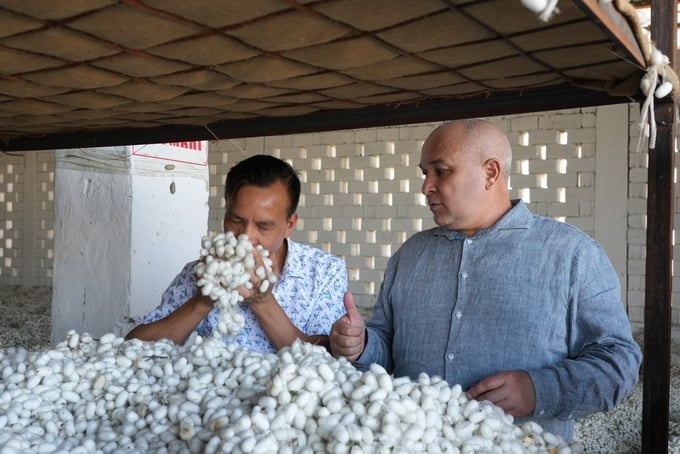
Mr. Nguyen Van Hai (left), Director of Hai Dung Commercial Company Limited, inspecting the quality of silk cocoons alongside Mr. Rustam Kholmatov, Chairman of the Council of the Republic Trade Union of Workers of the Agricultural Industrial Complex of Uzbekistan. Mr. Rustam Kholmatov expressed deep admiration towards the scale of the company, with over 10,000 laborers engaged in the sericulture value chain, including households, workers, and procurement staff.
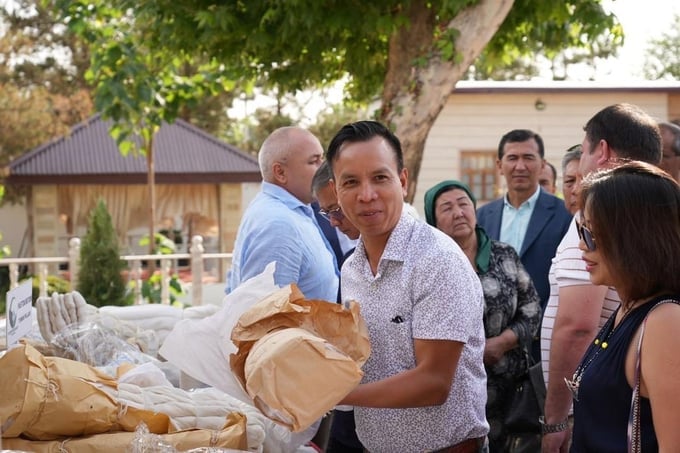
According to Mr. Nguyen Van Hai, his company provides market outlets for farmers in various regions across Vietnam, which include the Northern plains of Hoa Binh, Thai Binh, Nam Dinh, Ha Nam, Bac Ninh, Phu Tho; the highland provinces of Ha Giang, Cao Bang, Bac Kan, Yen Bai, Lao Cai, Tuyen Quang; the Central provinces of Nghe An, Quang Binh, Quang Ngai, Binh Dinh; the Central Highlands provinces of Lam Dong, Gia Lai, Daklak. In total, households from approximately 32 provinces and cities are supplying raw materials to Mr. Hai's company.
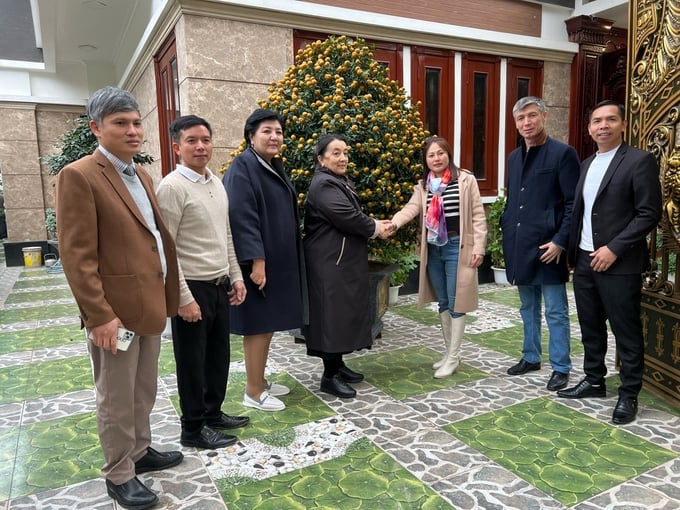
An Uzbekistan governmental and business delegation visited the residence of Mr. Nguyen Van Hai in Nha Xa, Duy Tien, Ha Nam. During their visit, the delegation suggested Mr. Hai to explore the idea of establishing a factory in Uzbekistan. Mr. Hai is a prominent entrepreneur within the Nha Xa silk weaving village. Notably, the village has recently focused on silk products to cater to the tourism sector, including Ao Dai, scarves, neckties, strawberry silk scarves, embroidered silk bedspreads and pillows with floral patterns, embroidered silk bedspreads and pillows with glossy motifs, silk bags, wallets, and backpacks. The village's wide range of products aims to meet the diverse needs of customers.
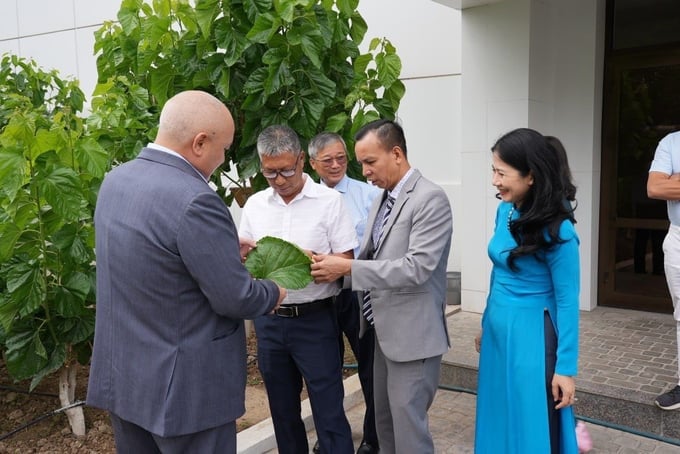
Mr. Nguyen Van Hai introducing the delegation members to mulberry leaves, which is used as feed for silkworms. According to the Uzbekistan delegation, Nha Xa silk products such as scarves, clothing, and blankets are highly favored by the people of Uzbekistan. Uzbekistan is currently exporting silk cocoons to Vietnam. Subsequently, artisans in Nha Xa village process these cocoons before selling the final products to various markets around the world, including Uzbekistan.
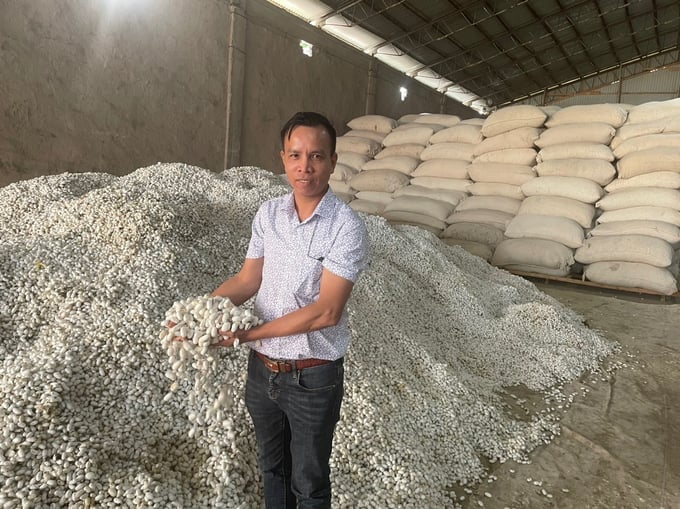
During an earlier meeting between the Ministry of Agriculture and Rural Development of Vietnam and the Uzbekistan delegation, both parties agreed on the importance of collaboration in training programs for the silk industry. Namely, this industry can contribute significantly to the development of Vietnam's agricultural sector and rural areas towards "ecological agriculture, modern rural areas, and civilized farmers." Consequently, the Ministry of Agriculture and Rural Development of Vietnam welcomes future collaborative efforts between both parties with the aim of establishing an efficient and sustainable silk industry.

In addition to the Uzbekistan market, Hai Dung Commercial Company Limited also exports Vietnamese silk products to India, Thailand, China, Laos, Cambodia, South Korea, and multiple European countries. According to statistics, the total global raw silk yield is currently estimated at over 162 thousand tons, with an average annual growth rate of 15.7%. Additionally, China ranks first in terms of silk production globally, accounting for over 80% of the global yield; followed by India, Uzbekistan at 1.3%, and Vietnam.

A look inside the Hai Dung Commercial Company Limited's silk production factory. According to the Department of Livestock Production of Vietnam, there are currently 32 provinces across the country engaged in sericulture, involving approximately 38,000 households and over 100,000 farmers. Most notably, the silk industry accounts for 2% of Vietnam's total export value. Three types of mulberry varieties are currently utilized in local production, including: local varieties, new hybrid Vietnamese varieties, and Chinese varieties. Namely, the new hybrid Vietnamese varieties yield between 35 and 40 tons of mulberry leaves per hectare. The price of yellow cocoons ranges from 110,000 to 120,000 Vietnamese dong per kilogram; whereas the price of white cocoons ranges from 170,000 to 205,000 Vietnamese dong per kilogram (these prices vary depending on the region and season).

According to Ha Nam province's Department of Agriculture and Rural Development, Hai Dung Company's products have made a significant contribution to creating new employment opportunities, and providing stable income for farmers. As a result, Vietnamese silk has the potential to extend its global reach.
Translated by Nguyen Hai Long

(VAN) The U.S. is the largest market for Vietnamese cashew nuts. However, when exports to the U.S. encounter difficulties due to reciprocal tariffs, Vietnamese cashews still have many other potential markets.
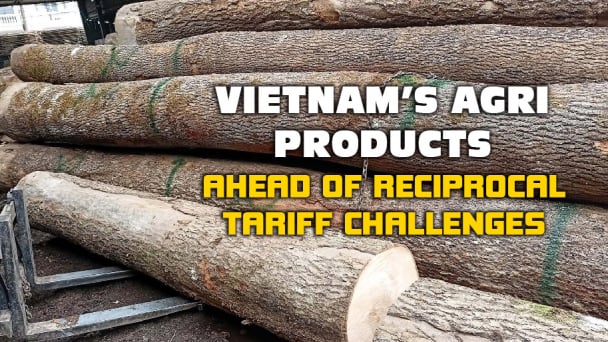
(VAN) Reciprocal tariffs present a significant obstacle to Vietnam's wood exports to the United States; however, domestic wood businesses are endeavoring to preserve their market share in this critical market.
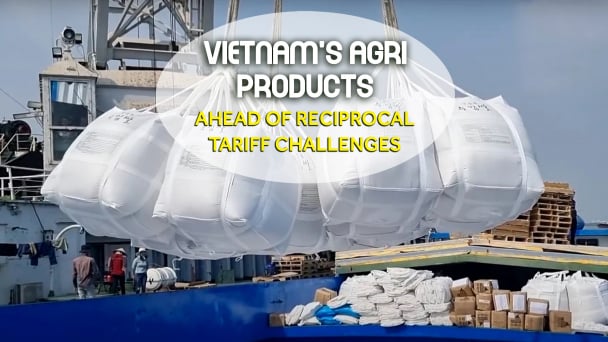
(VAN) Businesses in Vietnam are attempting to export rice to the United States ahead of the implementation of reciprocal tariffs, while remaining their optimism regarding this critical market.
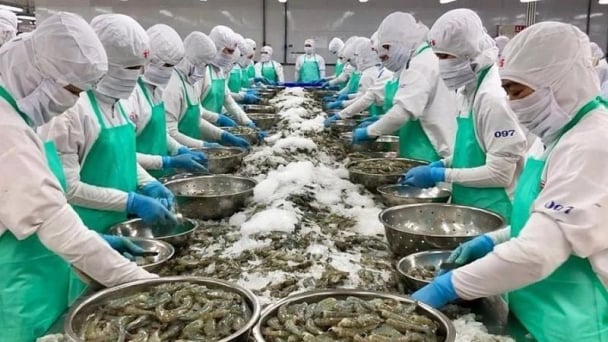
(VAN) From containers of cashew nuts, shrimp to in-depth technical dialogues, agricultural cooperation between Vietnam and the United States is entering a period of sustainable and two-way development.

(VAN) After the talks on May 28, Vietnam successfully exported its first batch of frozen durians to China, marking a new milestone in agricultural trade cooperation between the two countries.
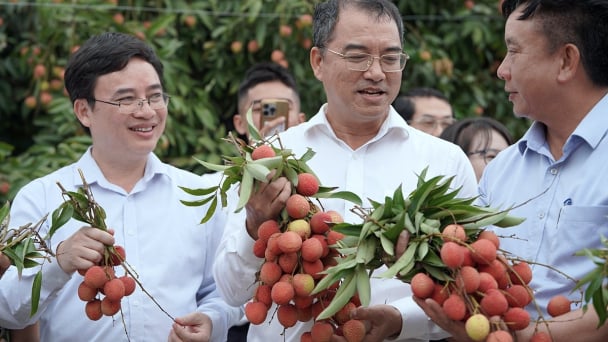
(VAN) Several major companies, such as Red Dragon and Ameii Vietnam, have signed purchasing agreements for the 2025 season, targeting markets including Japan, the United States, and the EU.
/2025/05/30/5010-5-173638_943.jpg)
(VAN) On May 29, at the GO! My Tho Trading Center, the Tien Giang Department of Industry and Trade, in collaboration with Central Retail Corporation, held the opening ceremony of the 3rd Fruit Festival 2025.